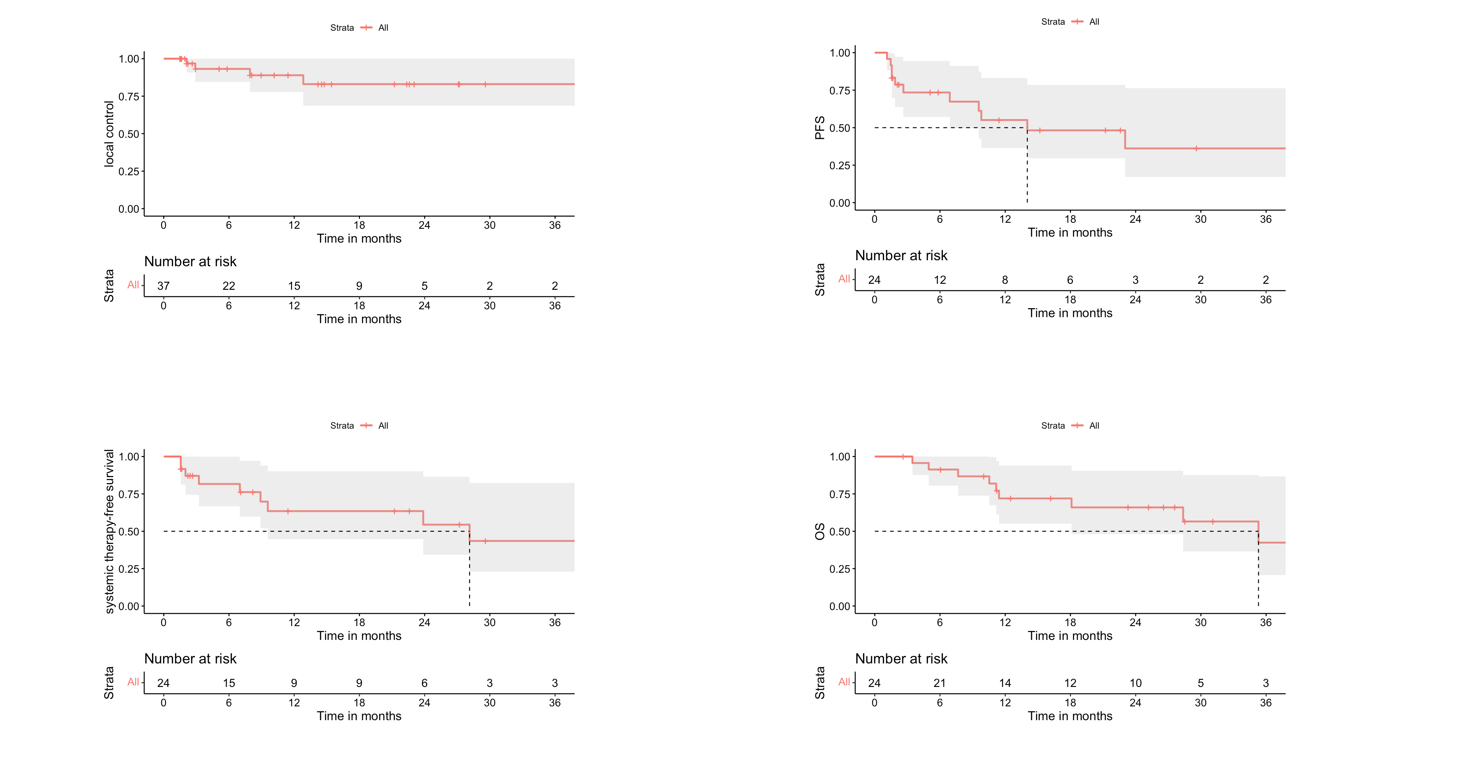The role of SABR in the management of oligometastatic and recurrent head and neck cancers
Ahmed Allam Mohamed,
Germany
PO-1177
Abstract
The role of SABR in the management of oligometastatic and recurrent head and neck cancers
Authors: Ahmed Allam Mohamed1, Marsha Schlenter1, Constanze Sorge1, Mareike Tometten2, Stephan Hackenberg3, Miguel Goncalves3, Frank Hölzle4, Michael Eble1
1RWTH Aachen University Hospital, Department of Radiation Oncology, Aachen, Germany; 2RWTH Aachen University Hospital, Department of Hematology, Oncology and Stem Cell Transplantation, Aachen, Germany; 3RWTH Aachen University Hospital, Department of Oto-Rhino-Laryngology - Head and Neck Surgery, Aachen, Germany; 4RWTH Aachen University Hospital, 4Department of Oral and Maxillofacial Surgery, Aachen, Germany
Show Affiliations
Hide Affiliations
Purpose or Objective
Stereotactic ablative body radiotherapy (SABR) has emerged as a local ablative tool in the management of oligometastatic disease (OMD). However, prospective studies in this indication were almost tumor-agnostic. Further, evidence of the impact of SABR in the management of oligometastatic /recurrent head and neck cancer is scarce. In the current analysis, we are reporting a single-center experience about the efficacy of SABR in this subset of patients
Material and Methods
We retrospectively analyzed all the head and neck cancer patients from 1/2015 till 09/2022 in our registry, who received SABR through the course of their treatment. Patients were considered eligible for the analysis when SABR was applied for 1-5 metastatic sites (oligometastatic) or to regional recurrence after primary treatment. Synchronous OMD was considered when the metastasis was diagnosed till 3 months after the initial diagnosis and metachronous OMD was diagnosed after 3 months. Endpoints for the analysis were the local control (LC), progression-free survival (PFS) overall survival (OS), and systemic therapy-free survival.
Results
Twenty-four patients with 37 lesions (31pulmonary lesions, 4 mediastinal lymph nodes and 1 suprarenal metastasis, and one regional recurrence in the base of the tongue) met the criteria for the analysis. seventeen patients were diagnosed with metachronous OMD, 6 patients with synchronous OMD, and one patient with oligo-recurrence. Nineteen Patients with 31 lesions had squamous cell carcinoma histology and 5 patients with 6 lesions had other histology. The median prescribed dose as EQD2 α∕β10 was 88 Gy (range 48-93.8), in median 3 fractions (range 1-8). LC at 6 months, 1, and 2 years was 93.2%, 89%, and 83% respectively. The median PFS and OS were 14 & 35.3 months respectively. The median systemic therapy-free survival was 28.13 months (figure) .
.
Conclusion
SABR in the management of oligometastatic and recurrent head and neck cancer provides a favorable local control and provide a chance to delay systemic therapy with favorable overall survival outcomes for this well-selected subset of patients.